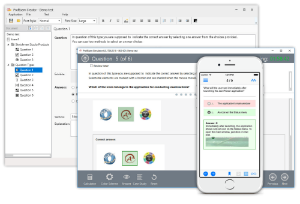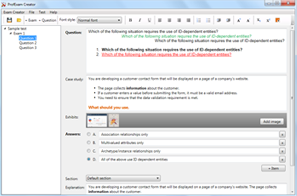File Info
| Exam | Oracle Database 12c: RAC and Grid Infrastructure Administration |
| Number | 1z0-068 |
| File Name | Oracle.1z0-068.PassLeader.2019-01-10.90q.vcex |
| Size | 730 KB |
| Posted | Jan 10, 2019 |
| Download | Oracle.1z0-068.PassLeader.2019-01-10.90q.vcex |
How to open VCEX & EXAM Files?
Files with VCEX & EXAM extensions can be opened by ProfExam Simulator.
Coupon: MASTEREXAM
With discount: 20%
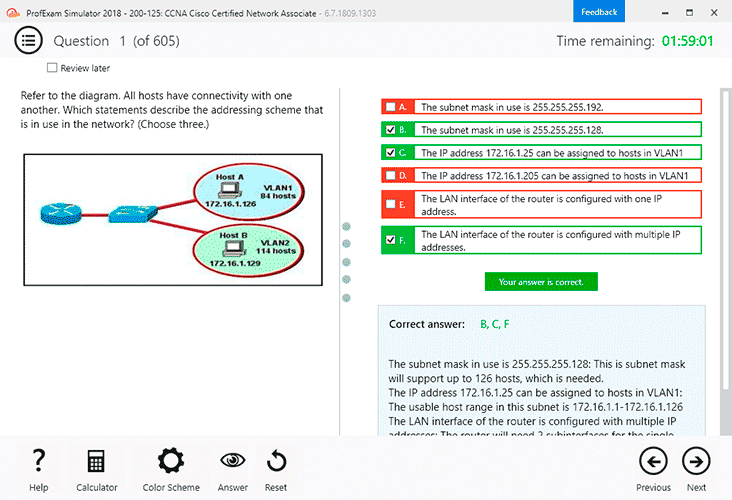
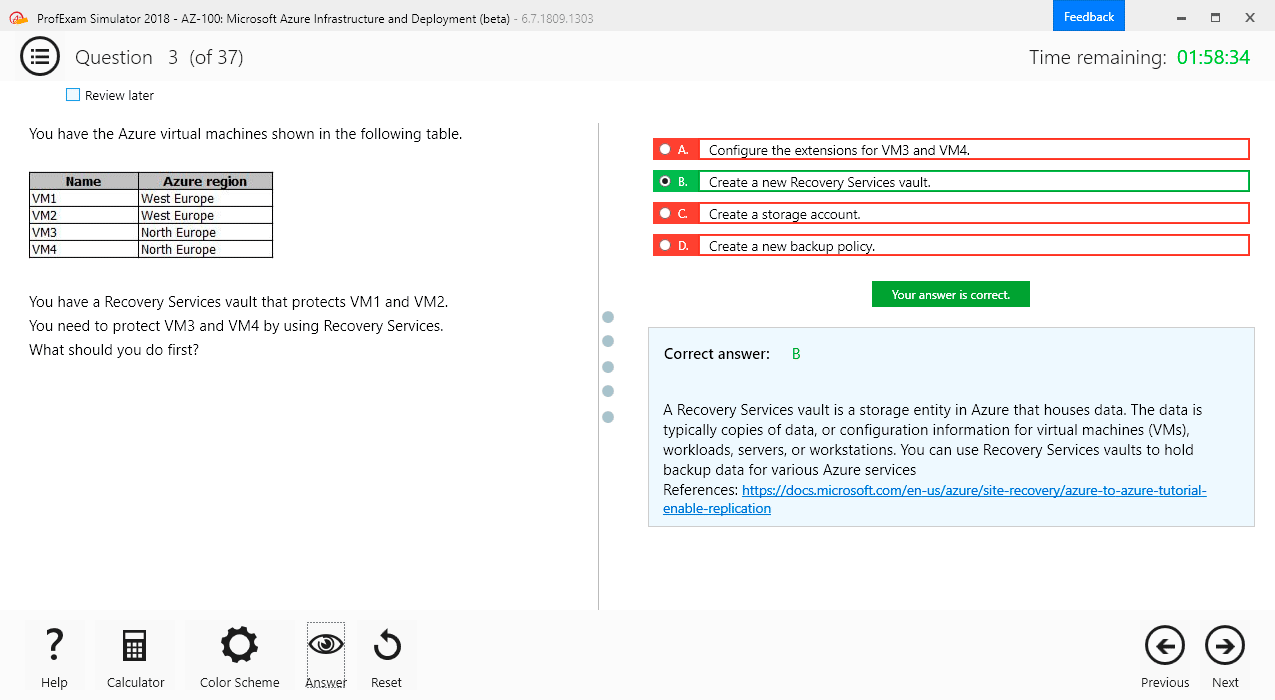
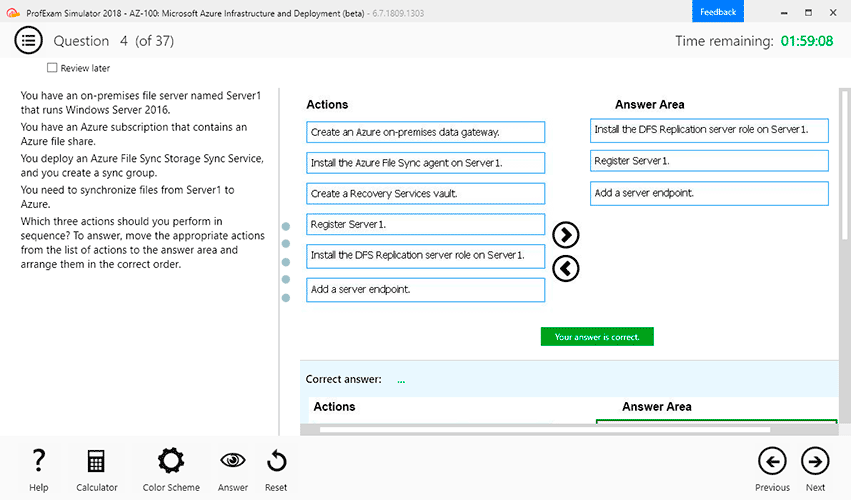
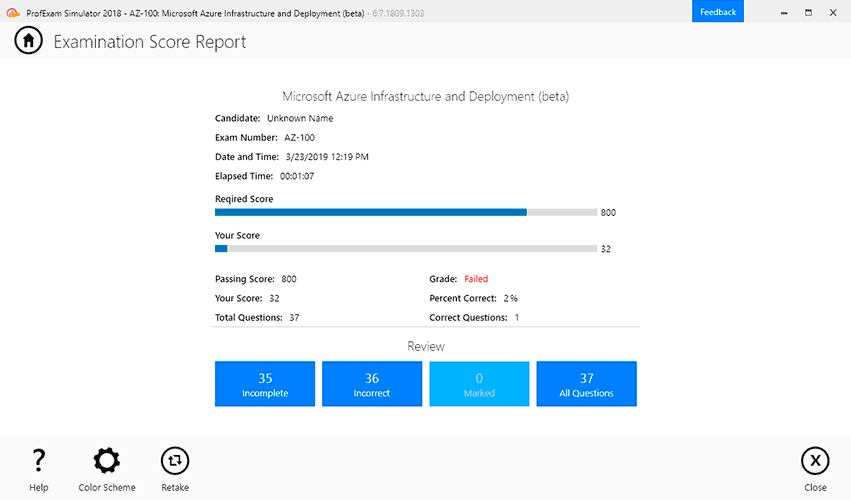
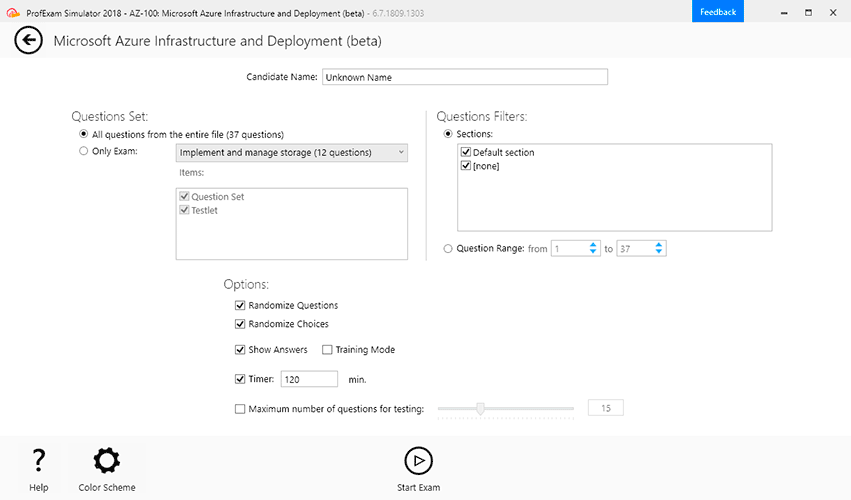
Demo Questions
Question 1
Examine the output of this command:
ASMCMD> volinfo –G ACFS -a
Diskgroup Name: ACFS
Volume Name: VOL1
Volume Device: /dev/asm/vol1-280
State: ENABLED
Size (MB): 248
Resize Unit (MB): 32
Redundancy: MIRROR
Stripe Columns: 4
Stripe Width (K): 128
Usage: ACFS
Mountpath: /u01/app/grid/acfsmount
The ACFS disk group is a normal redundancy disk group with 5 GB of free space.
To increase the size of the ACFS file system, you execute this command as the root user:
$ /sbin/acfsutil size +200M /u01/app/grid/acfsmount
Which two statements are true regarding the outcome of this command?
- It resizes VOL1.
- It fails to resize the filesystem because it must be unmounted before resizing.
- It fails to resize VOL1 because it must be executed as a user belonging to the SYSASM group.
- It succeeds but leaves the filesystem unmounted.
- It resizes the filesystem mounted on /u01/app/grid/acfsmount.
Correct answer: AD
Question 2
You support a three-instance, policy-managed, multitenant RAC database CDB1 with two PDBs PDB_1 and PDB_2.
It runs on an eight-node cluster and a serverpool prod_pool has three servers.
Examine these commands executed on HOST01:
$ srvctl add service –db CDB1 –pdb PDB_1 –service HR –serverpool prod_pool
$ srvctl start service –db CDB1 –service HR
$ srvctl stop service –db CDB1 –service HR
Which two statements are true?
- HR is uniformly managed across all instances in prod_pool.
- srvctl stop service only closes PDB_1 in the instance on HOST01.
- srvctl stop service closes PDB_1 on all CDB1 instances.
- srvctl stop service prevents logins for HR only to CDB1 on HOST01.
- srvctl stop service prevents logins to any instance of CDB1 using service HR.
- HR is available on a single instance of prod_pool.
Correct answer: AE
Question 3
Which three statements are true about the services created when the DBCA is used to create a RAC database?
- They can be policy managed for a multitenant database.
- Singleton services are not permitted for multitenant databases.
- A server-pool must be created with SRVCTL before creating a policy-managed RAC database that uses that server-pool for a service.
- Policy-managed services specified for a database allow the creation of a new server pool using DBCA.
- They can be administrator managed for a multitenant database.
Correct answer: ADE
Explanation:
Because policy-managed configuration was selected, the server pool to host the new CDB must be defined. Choose between using an existing server pool or creating a new one and specifying the detail of the new server pool to be used by the CDB. Policy-managed deployments facilitate consolidation. In the case of schema consolidation, where multiple applications are being hosted in a single database (CDB) separated into PDBs, since server pools determine which services run together or separately, you can configure and maintain required affinity or isolation of PDB services. Managing a policy-managed database requires less configuration and reconfiguration steps than an administrator-managed one with respect to creation, sizing, patching, and load balancing. Also, because any server in the server pools within the cluster can run any of the CDB instances and PDB services, you do not have to create and maintain CDB instance-to node-name mappings and PDB service-to-node-name mappings. Because policy-managed configuration was selected, the server pool to host the new CDB must be defined. Choose between using an existing server pool or creating a new one and specifying the detail of the new server pool to be used by the CDB.
Policy-managed deployments facilitate consolidation. In the case of schema consolidation, where multiple applications are being hosted in a single database (CDB) separated into PDBs, since server pools determine which services run together or separately, you can configure and maintain required affinity or isolation of PDB services.
Managing a policy-managed database requires less configuration and reconfiguration steps than an administrator-managed one with respect to creation, sizing, patching, and load balancing. Also, because any server in the server pools within the cluster can run any of the CDB instances and PDB services, you do not have to create and maintain CDB instance-to node-name mappings and PDB service-to-node-name mappings.
Question 4
Which three statements are true about the Global Enqueue Service and Global Enqueue Service (GES) Resources in Oracle 12c RAC?
- The mastering instance for a GES resource is never the same as the instance that owns the enqueue in exclusive mode.
- The LMD0 runs only on the instance that masters all GES resources.
- When a GES resource is dequeued, converters if any exist for that resource, are processed before any waiter for that resource.
- The LMD0 process on the requesting instance communicates with the LMD0 process on the mastering instance if they are not the same instance.
- The mastering instance for a GES resource is never the same as the instance that owns an enqueue in shared mode.
- An LMD0 process runs on all instances.
- The foreground process on the requesting instance communicates with the LMD0 process on the mastering instance if they are not the same instance.
Correct answer: DEG
Question 5
Which two statements are true concerning buffer states as shown in GV$BH.STATUS in Oracle 12c RAC?
- An XCUR block image may exist for a specific database block in only one instance.
- A CR image may get served from one instance to another to satisfy a read request.
- An XCUR image is not downgraded to a SCUR image for shipping to another instance until commits occur for updated rows on the block.
- A PI block image may exist for a specific database block in only one instance.
Correct answer: AB
Explanation:
A: xcur is a RAM block that has been acquired in exclusive current mode. According the Oracle documentation, if a buffer state is exclusive current (XCUR), an instance owns the resource in exclusive mode.B: cr mode indicates a "cloned" RAM block (a "stale" block), that was once in xcur mode. The instance has shared access to the block and can only perform reads. The cr state means the owning instance can perform a consistent read of the block, if the instance holds an older version of the data.References: http://www.dba-oracle.com/t_v$bh_status_free_buffer_blocks.htm A: xcur is a RAM block that has been acquired in exclusive current mode. According the Oracle documentation, if a buffer state is exclusive current (XCUR), an instance owns the resource in exclusive mode.
B: cr mode indicates a "cloned" RAM block (a "stale" block), that was once in xcur mode. The instance has shared access to the block and can only perform reads. The cr state means the owning instance can perform a consistent read of the block, if the instance holds an older version of the data.
References: http://www.dba-oracle.com/t_v$bh_status_free_buffer_blocks.htm
Question 6
You administer a six-instance, policy-managed, multitenant RAC database CDB1 with three PDBs: PDB_1, PDB_2 and PDB_3.
Server pool prod_pool has a cardinality of three and all six hosts of the cluster app.
Examine these commands executed on HOST01:
$ srvctl add service –db CDB1 –pdb PDB_1 service AR –serverpool prod_pool –cardinality singleton
$ srvctl start service –db CDB1 –service AR
Which two statements are true regarding the AR service?
- AR runs as a singleton service in the server pool prod_pool and the AR service is available in each of the CDB1 instances.
- AR is available on any one available CDB1 instance in prod_pool at any one time.
- AR can fail over to any one of the available CDB1 instances.
- AR is available only on the CDB1 instance on HOST01.
- AR can fail over to any other available CDB1 instance in prod_pool.
Correct answer: BE
Question 7
Which two statements are true about the Global Enqueue Service, Instance Locks, and global enqueues in Oracle 12c RAC?
- In a RAC One Node database, there is no LMD0 process if only one instance is running.
- Global Enqueues and Instance Locks replace mutexes completely in RAC database instances.
- In a RAC database, there is no LMD0 process if only one instance is running.
- Global Enqueues and Instance Locks replace latches completely in RAC database instances.
- Global Enqueues may have owners and waiters in the same instance.
- Global Enqueues may have converters and waiters in the same instance.
Correct answer: AF
Explanation:
F: A convert queue is a queue of locks that are waiting to be converted to particular mode, this is the process of changing a lock from one mode to another, even a NULL is a lock. A resource has a lock value block (LVB). The Global Resource Manager (GRM) keeps the lock information valid and correct across the cluster. Oracle 10g release 2 and beyond replaced some latch mechanisms with the mutex approach, claiming that they are faster and more efficient than traditional locking mechanisms. Incorrect Answers:B, D: Mutexes are objects that exist within the operating system to provide access to shared memory structures. They are similar to latches.References: http://www.datadisk.co.uk/html_docs/rac/grd.htm F: A convert queue is a queue of locks that are waiting to be converted to particular mode, this is the process of changing a lock from one mode to another, even a NULL is a lock. A resource has a lock value block (LVB). The Global Resource Manager (GRM) keeps the lock information valid and correct across the cluster. Oracle 10g release 2 and beyond replaced some latch mechanisms with the mutex approach, claiming that they are faster and more efficient than traditional locking mechanisms.
Incorrect Answers:
B, D: Mutexes are objects that exist within the operating system to provide access to shared memory structures. They are similar to latches.
References: http://www.datadisk.co.uk/html_docs/rac/grd.htm
Question 8
Which three statements are true about the cluster file system archiving scheme?
- Each node can read only the archived logs written by itself.
- Nodes don’t use network to archive files.
- Each node can read the archive redo log files of the other nodes.
- Each node archives to a uniquely named local directory.
- Each node archives to a local directory with the same path on each cluster node.
- Each node writes to a single location on the cluster file system while archiving the redo log files.
Correct answer: ABD
Explanation:
AB: In a cluster file system each node can only read from and write to its own local file system.D: Configure each node to write to a local archiving directory that is named the same on each node.References:https://docs.oracle.com/cd/E18283_01/rac.112/e16795/rman.htm AB: In a cluster file system each node can only read from and write to its own local file system.
D: Configure each node to write to a local archiving directory that is named the same on each node.
References:
https://docs.oracle.com/cd/E18283_01/rac.112/e16795/rman.htm
Question 9
Examine these commands:
$ srvctl add service –db racdb –service erp –serverpool srvpooll
- failovertype TRANSACTION –commit_outcome TRUE – replay_init_time 1800
- retention 86400 –notification TRUE –rlbgoal SERVICE_TIME –clbgoal SHORT
- failoverretry 30 – failoverdelay 10
$ srvctl start service – db racdb – service erp
Instances RACDB_1 and RACDB_2 run on host01 and host02, respectively.
Which three statements are true regarding the service erp?
- Connections to the database using erp benefit from Application Continuity.
- erp is configured for an administrator-managed RAC database.
- Load Balancing Advisory (LBA) will be disabled for this service.
- Connections to the database using erp benefit from Load Balancing.
- Connections to the database using erp benefit from Transaction Guard.
Correct answer: ADE
Explanation:
A: To enable Application Continuity for Java, set the failovertype parameter to TRANSACTION.D: -clbgoal {SHORT | LONG}Connection Load Balancing Goal. Use a value of SHORT for this parameter for run-time load balancing, or if using an integrated connection pool. E: Enable Transaction Guard through the -commit_outcome parameter. When it is set to TRUE, the commit outcome for a transaction is accessible after the transaction's session fails due to a recoverable outage.Incorrect Answers:C: Load Balancing Advisory (LBA) is set through –rlbgoal parameter. Set this parameter to SERVICE_TIME to balance connections by response timeReferences: https://docs.oracle.com/database/121/RACAD/srvctladmin.htm#RACAD5050 A: To enable Application Continuity for Java, set the failovertype parameter to TRANSACTION.
D: -clbgoal {SHORT | LONG}
Connection Load Balancing Goal. Use a value of SHORT for this parameter for run-time load balancing, or if using an integrated connection pool.
E: Enable Transaction Guard through the -commit_outcome parameter. When it is set to TRUE, the commit outcome for a transaction is accessible after the transaction's session fails due to a recoverable outage.
Incorrect Answers:
C: Load Balancing Advisory (LBA) is set through –rlbgoal parameter. Set this parameter to SERVICE_TIME to balance connections by response time
References: https://docs.oracle.com/database/121/RACAD/srvctladmin.htm#RACAD5050
Question 10
Which three statements are true about opatch version 12?
- It can apply patches to a database ORACLE_HOME.
- It can apply a patchset to a database ORACLE_HOME.
- It cannot apply a patch to a Grid Infrastructure ORACLE_HOME.
- It cannot run with root privileges on a Unix-like system.
- It can apply some patches without shutting down database instances.
- It can only apply patches on the cluster node from where it is issued.
Correct answer: ABE
Explanation:
Incorrect Answers:C: The OPatch and OPatchauto utilities provide you with the flexibility to analyze, troubleshoot, and patch an individual GI (Grid Infrastructure)/RAC (Real Application Cluster) home environments.D: It is recommended that OPatch should not be invoked by 'root', if so then the CheckUserAdminPrivilege check fails. But it is possible to run OPatch with root privileges.F: OPatchauto executes across all hosts in the associated system, using SSH as its remote execution mechanism for requisite commands, such as opatch apply.References:http://docs.oracle.com/cd/E24628_01/doc.121/e39376/opatch_overview.htm#OPTCH106https://docs.oracle.com/cd/E24628_01/doc.121/e39376/opatch_commands.htm#OPTCH198 Incorrect Answers:
C: The OPatch and OPatchauto utilities provide you with the flexibility to analyze, troubleshoot, and patch an individual GI (Grid Infrastructure)/RAC (Real Application Cluster) home environments.
D: It is recommended that OPatch should not be invoked by 'root', if so then the CheckUserAdminPrivilege check fails. But it is possible to run OPatch with root privileges.
F: OPatchauto executes across all hosts in the associated system, using SSH as its remote execution mechanism for requisite commands, such as opatch apply.
References:
http://docs.oracle.com/cd/E24628_01/doc.121/e39376/opatch_overview.htm#OPTCH106
https://docs.oracle.com/cd/E24628_01/doc.121/e39376/opatch_commands.htm#OPTCH198
